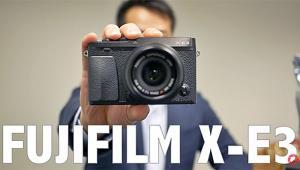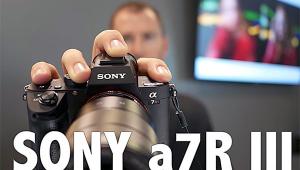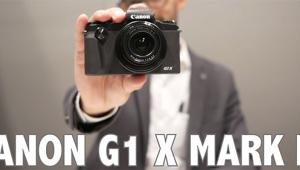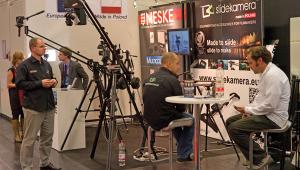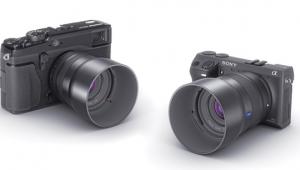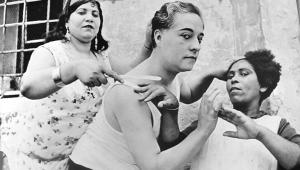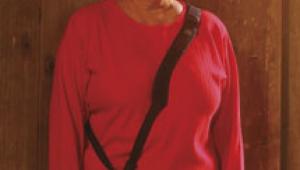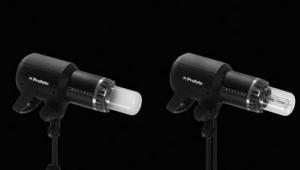Special Report: photokina: Studio Update--Lighting And Assorted "Weird" Gear
We were profoundly grateful to George Schaub--our Beloved Helmsman, Chairman, and Leader--for telling us that he didn't want a laundry list of new products. Listing every improvement in electronic flash would take up half the magazine, and it would come down to one generalization for all anyway. Everyone's flashes are becoming more powerful and more efficient; control is being improved, with reliable 1/10 stop graduations in many cases; and wireless remote control (usually radio rather than infrared) is becoming more and more widespread.
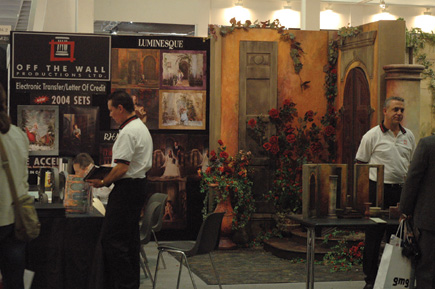
Hot (tungsten) lights are once again increasingly popular, and hot-light softboxes
are coming down in price. Many softboxes melt or (worse still) catch fire when
used with hot lights instead of flash, but Paterson's new Interfit Pro
Soft (www.patersonphotographic.com)
comes in 15 sizes and is heat-resistant up to 400Þ C: we hope to test
a couple of them soon, possibly alongside their new flash units for a hot light
vs. flash test. Photoflex (www.photoflex.com)
was another maker stressing hot-light softboxes, especially the OctoDome nxt
(sic) with their own Starlite 3200 hot light.
A major trend was the appearance of small lighting enclosures for product photography:
several manufacturers specifically stated that their products were invaluable
for people who wanted to sell on eBay. One of the cleverest products (from Lastolite)
was a series of gray focusing targets, at approximately 12 percent, 18 percent,
and 30 percent, for fooling fully-auto digicams. The idea was that you focus-lock
and exposure-lock on the appropriate card, then whip it out and shoot the product
instead. Using the dark card (12 percent) will result in slight overexposure,
meaning a pure white background, while using a light card (30 percent) will
result in slight underexposure which will give extra detail in light subjects
such as silver trinket boxes. We hope in due course to run a side by side test
on two different approaches to the same solution, from Kaiser (www.hpmarketingcorp.com)
and Lastolite (www.bogenimaging.us).
In fact, the range of studio equipment is now bewildering. Where 30 years ago
we built our lights and sets out of bamboo and black cardboard and bulldog clips
and string, you can now buy almost anything "off the shelf": there
is literally too much to describe, and if you are serious about studio photography
you would do well to visit photokina to see the extraordinary range of products
available, including even complete room and "outdoor" sets from
companies such as Off The Wall Productions (www.otwp.com)
in Canada.
Accessories And Weird Stuff
One of the sad things about photokina is that there are ever fewer tiny booths
selling weird stuff: the cost per square meter is now so high that few small
companies can afford to go. Even so, there are a few big companies who still
sell weird stuff, and there are a number of accessories that aren't weird
at all but deserve coverage.
In the latter category there is a very basic continuous-light slide copier from
Kaiser, albeit only in prototype form. Slide copier? Yup. Suppose that (like
me) you have thousands of slides and you want to use them on your website or
send out reference pics. Sure you can scan them, but if you have a reasonably
versatile digital camera (best of all an SLR like my Nikon D70) it's an
awful lot quicker to use a slide copier, where basically you can shoot them
as fast as you can put them into the carrier and take them out again.
Another excellent "old-fashioned" introduction was the Sekonic L-558
(www.sekonic.com), a do-it-all
spot and incident meter at an attractive price. Digital cameras have lamentably
low latitude, even worse than slide film except perhaps when shooting "raw,"
and even then, you dare not err on the side of overexposure. Precise exposure
determination is therefore more important than ever, and a meter like this allows
you to get it right.
Another increasingly important product in the digital realm is a daylight-balanced
viewing source for prints: many inks exhibit appalling metamerism when transferred
from daylight to artificial light. I've been using a British-built DW
Viewtower for years, but in the US I'd look at GTI (www.gtilite.com),
who had a couple of new models. They are not cheap, and it's not exactly
a glamorous accessory, but a few hundred dollars spent here could greatly improve
your ink jet printing.

Kapture Group, Inc. (www.kapturegroup.com)
showed some very clever stitching and non-stitching adapters for high-end digital
backs: panoramic, twin exposure on Fuji 680, digiback on 35mm lenses (Nikon,
Canon FD, Leica R, Canon, Olympus, Contax), and more.
Swanson of Jiangsu (call: 513 570 0127) in China showed a magnificent array
of brass telescopes in almost 18th century elegance, but it is hard to see how
they could justify "My products have patent in China."
Several people have begun to address the problem of digital pictures disappearing
into hyperspace, and two of my favorites were a ring-bound album from MyPhotoFun
(via uploaded files; www.myphotofun.com)
and properly bound hard-back books from Fotobuch 24 (via a home-burned CD; www.fotobuch24.de).
Prices for the latter range from 24.90 euros for 24 pages to 49.90 euros for
64 pages: that's about $30-$60. Soft backs are 5 euros ($6) less.
For my money, Fotobuch 24 hard backs are the ultimate photo albums, making use
of modern printing-on-demand technology: a thousand times better than either
the old shoebox approach that most of us use or the Internet solutions that
the more overheated futurologists predict. Who, after all, wants to go online
every time they want to look at the family album, when they could pull out a
book and take it anywhere?
The only other book I picked up at photokina--and there are many publishers
and book dealers there--was Flash...The MOST Available Light by Quest
C. Couch, III of LumiQuest (www.lumiquest.com).
If (like me) you dislike flash, this should do a lot to break down your prejudices,
and if you do like flash it will show you the very best way to use it. What
Couch did was to try to answer all the questions he is asked all the time, and
he has done so in a clever format. The reason for mentioning the book here,
instead of in a book review, is that it marks an interesting departure: far
too few manufacturers nowadays realize the value of a book that tells people
how to use their products (and those of others).
Barely in the photographic realm, but still intriguing, was the proliferation
of binoculars and telescopes with built-in digicams. The most fascinating was
from Meopta (www.meopta.com),
built into a hunting rifle sight. It is only VGA resolution, but it takes 15
frames per second without capturing any--until you fire the rifle, and
the recoil captures that frame.
For inspired and truly photographic high weirdness, though, my prize goes to
the digital Rollei TLR (www.rolleiusa.com).
The big problem with digicams is seeing that silly little screen, right? And
what you need is a hood, right? And which sort of camera always has a hood?
Step forward the TLR with waist-level finder. The new 2-megapixel square-format
Minidigi weighs just 100g (call it 3.5 oz) and has a 9mm lens focusing to 0.7m.
The LCD monitor is just 23mm, 0.9", across. It's a snapshot camera,
sure, but it's a sweet little thing and of all the non-serious stuff at
photokina (e.g., the stuff that won't help me earn a living) it's
the one I'd most like to have taken home with me.
Finally, ignore all those people who say that photokina is "just a European
show" or "just a German show." It could be less Teutonic,
it is true, but photokina 2004 saw 1589 exhibitors from 50 countries, and 973
of those exhibitors were from outside Germany: that's over 60 percent.
There was one exhibitor from each of Argentina, Australia, Bulgaria, Finland,
Latvia, Lebanon, Lithuania, Macao, Malaysia, Romania, Russia, Slovakia, Syria,
the United Arab Emirates and White Russia (Belarus)--but Iran had three,
Norway five, Turkey eight, India 11, Canada 14, France 54, China 79, Great Britain
104, and the U.S.A. 123--the biggest number from any country except Germany,
and only a dozen fewer than China and Japan (56) combined. To me, and clearly
to a lot of American exhibitors (nearly 8 percent of the stands), photokina
doesn't look like a regional show. And the fact that a number of the companies
I mention don't have American distribution does not mean that they are
irrelevant to the American market. Rather, the exact opposite. These are opportunities
for American importers or innovators.
- Log in or register to post comments
